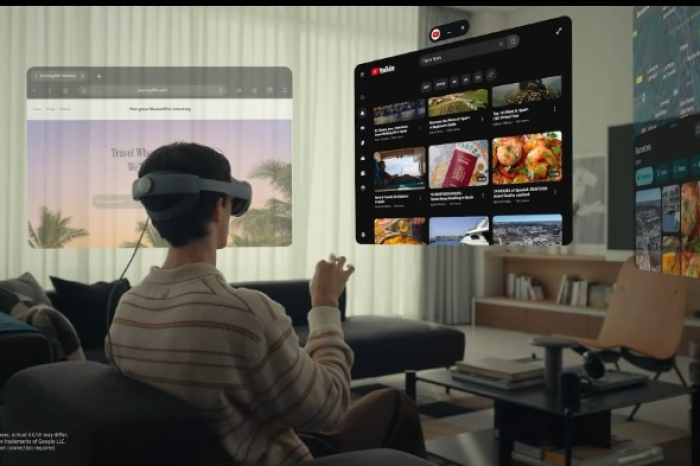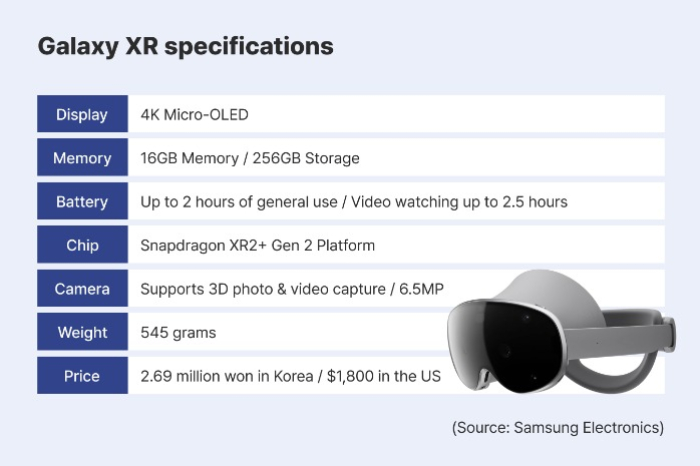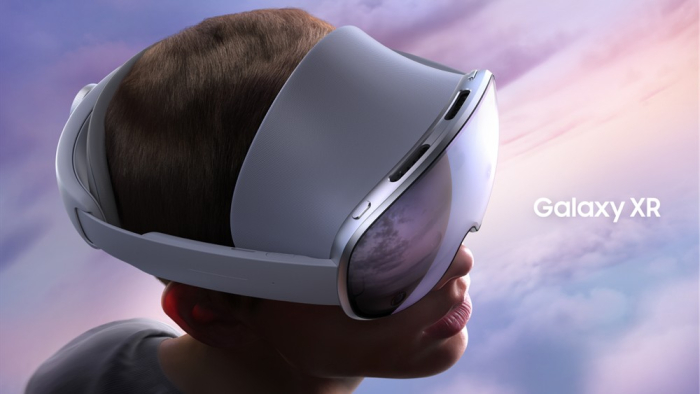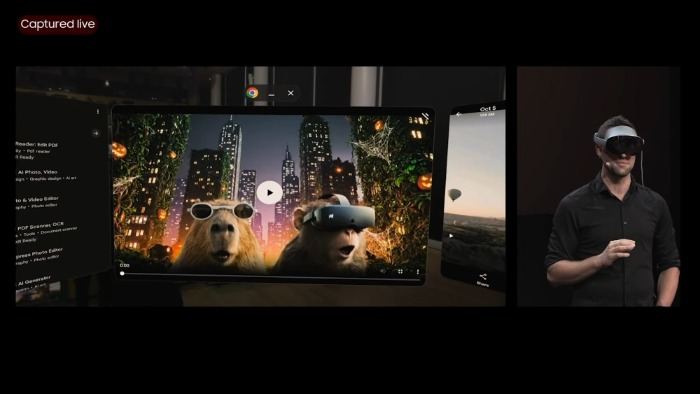
Samsung Electronics Co. wants to make artificial intelligence wearable.
Its new Galaxy XR headset, unveiled on Wednesday, is its boldest attempt yet and the clearest sign that the South Korean tech giant sees the next big platform not in pockets but on faces.
The Galaxy XR, developed with Google LLC and Qualcomm Technologies Inc., arrives at 2.69 million won in Korea or $1,800 in the US, which is about half the price of Apple Inc.’s $3,500 Vision Pro.
It is the first extended reality device powered by the new Android XR platform, built from the ground up for the artificial intelligence era.
The goal is to merge physical and digital spaces through a device that can see what users see, hear what they hear and respond as if it understands.
“With Galaxy XR, Samsung is introducing a brand-new ecosystem of mobile devices,” said Choi Won-joon, chief operating officer of Mobile eXperience (MX) Business at Samsung Electronics.
“Galaxy XR expands the vision for mobile AI into a new frontier of immersive and meaningful possibilities, allowing XR to move from concept to everyday reality, for both the industry and users.”
A HEADSET THAT WATCHES, LISTENS AND LEARNS
Slip on the Galaxy XR and its “AI-native” identity becomes clear.
The headset’s built-in Gemini assistant, powered by Google’s flagship large language model, doesn’t just wait for voice commands but interprets what’s in front of the user.
When the user looks at a landscape photo and asks about its location, Gemini offers context instantly. If the user turns his or her head toward a landmark in a virtual map, it can pull up details or directions without extra prompts.
This kind of interaction turns the device into something closer to a real-time companion than a display.

Its cameras, microphones and motion sensors track head, hand, and eye movement with precision, while software filters out background noise to capture natural speech, according to the company.
AN OPEN DOOR FOR DEVELOPERS
Unlike Apple’s closed ecosystem, Samsung’s headset runs on an open Android XR environment.
It supports existing Android apps such as YouTube, Google Photos and Google Maps straight out of the box, and developers can adapt XR-specific experiences through OpenXR, WebXR or Unity frameworks, the company explained.
That openness could be Samsung’s biggest weapon, analysts said.
Developers frustrated by the high entry costs and limited reach of Apple’s Vision Pro may find Android XR’s broader install base more appealing.

For users, it means a richer library of apps and experiences from day one and, for Samsung and Google, a faster route to scaling their new ecosystem.
CAN SAMSUNG CRACK THE META-DOMINATED XR HEADSET MARKET?
But how fast will Samsung catch up to its bigger rivals in the XR headset race?
Meta Platforms Inc. still dominates the XR headset market, with its Quest series holding roughly 70% of global share. Apple’s Vision Pro generated buzz but hasn’t moved the needle for mass adoption.
That is where Samsung’s pricing strategy stands out. At $1,800, the Galaxy XR remains a premium gadget compared to Meta’s Quest series but sits well below Apple’s price ceiling.
It’s aimed at early adopters, professionals and developers who want high performance without paying luxury-device premiums.

Yet even at that price, mass appeal is far from guaranteed, industry experts said. Many consumers still question whether headsets deliver enough day-to-day utility to justify the cost.
Samsung and Google are wagering that AI-driven convenience – the ability to ask, gesture and look instead of tap – will finally make extended reality feel useful.
FROM HEADSETS TO GLASSES
The Galaxy XR isn’t an endpoint. Samsung calls it “the first step in a long-term XR journey,” one that leads toward AI-powered glasses.
The Korean tech giant said it is already collaborating with Warby Parker and Gentle Monster to design eyewear that fuses technology with fashion.
The idea is to make AI assistance as natural as putting on a pair of sunglasses – lightweight, stylish and seamlessly connected.

Samsung will, however, enter a highly competitive smart glasses market, which is also led by Meta, which has a strategic partnership with EssilorLuxottica, owner of the Ray-Ban and Oakley brands.
Meta currently commands about 73% of the global smart glasses market as of the first half of this year, according to Counterpoint Research. Chinese manufacturers such as Huawei, TCL and Xiaomi together account for roughly 10%.
Meta’s Ray-Ban–branded smart glasses have proven especially successful, selling more than one million units last year, more than triple the volume of the previous year.
That surge underscores how fast the category is evolving and how steep the climb will be for new entrants like Samsung, despite uncertainty over the market’s growth.
FORGING THE FUTURE TOGETHER
That ambition explains Samsung’s partnership with Google and Qualcomm.
Each brings a distinct strength, with Samsung’s hardware and display engineering, Qualcomm’s Snapdragon Spaces XR platform and Google’s Gemini AI and Android software. Together they’re crafting a third ecosystem to challenge Apple’s and Meta’s entrenched positions.

Samsung is also targeting enterprise uses, from immersive design to safety training.
It is already working with Samsung Heavy Industries Co. to deploy the Galaxy XR in virtual shipbuilding programs, an early example of how the technology could enhance industrial productivity before it becomes mainstream.
The global XR headset market is projected to soar from $12.5 billion in 2024 to $16.9 billion in 2025, reaching $261.9 billion by 2034, according to Precedence Research.
Yet the industry is still searching for its defining moment – something as indispensable as the smartphone once was.
Samsung’s bet is that artificial intelligence will be the catalyst, transforming headsets from novelty gadgets into practical computing tools.
If Meta’s Quest is the budget crowd-pleaser and Apple’s Vision Pro the luxury showcase, Samsung’s Galaxy XR aims for the intelligent middle ground – accessible, capable and deeply integrated with AI.
By Eui-Myung Park and Chae-Yeon Kim
uimyung@hankyung.com
Sookyung Seo edited this article.















